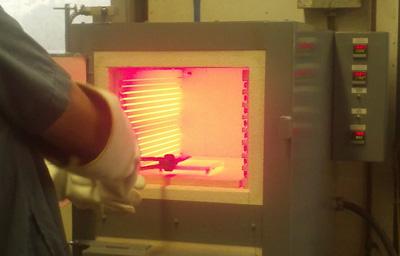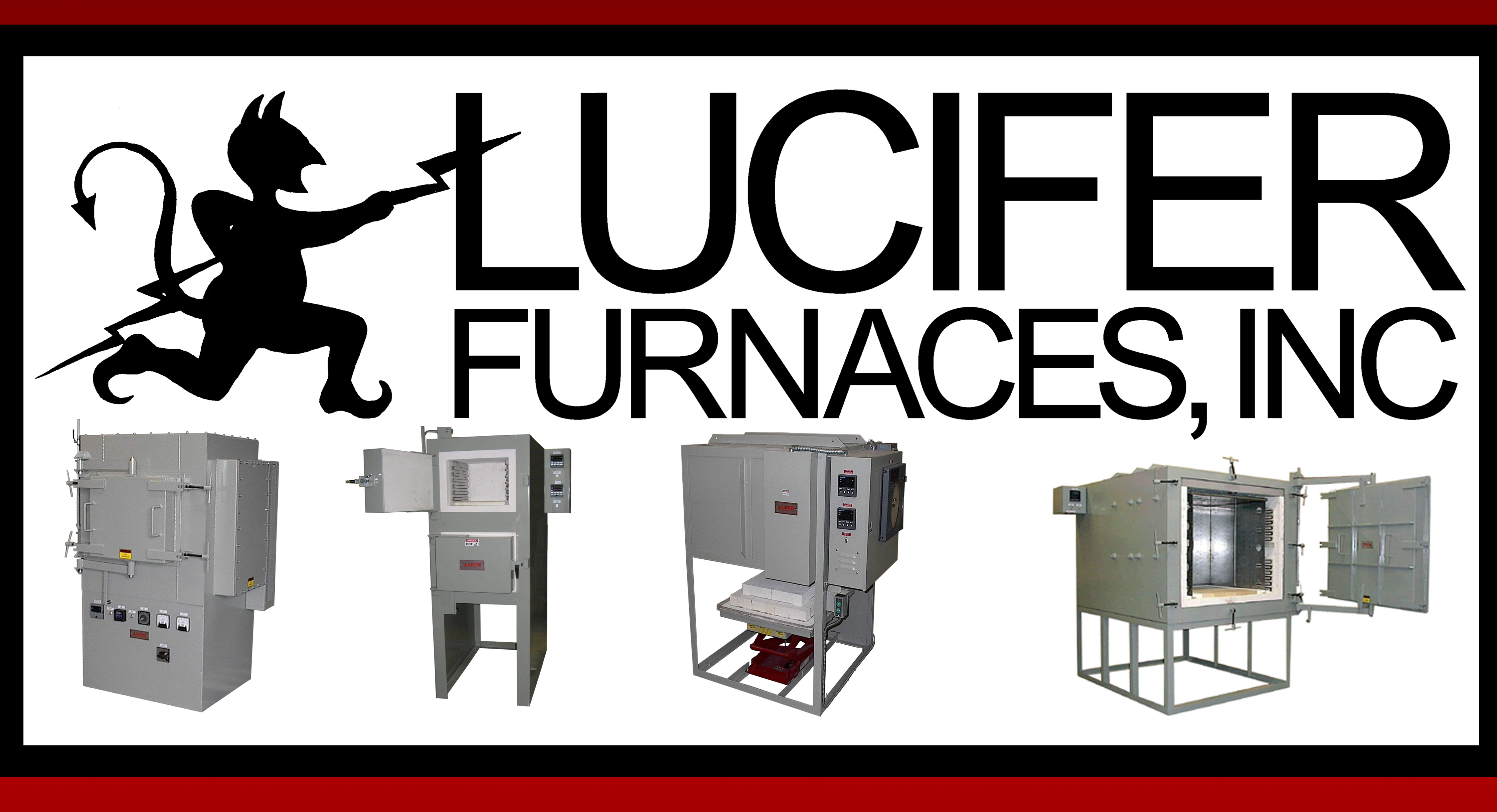
Lucifer Furnaces delivered a Red Devil Series furnace to Precision Solutions, Richmond, Utah. Model RD8-KHE24 is a space-saving dual-chamber unit with working dimensions of 12"H x 14"W x 24"L in both upper and lower chambers.
The upper hardening chamber reaches 2200°F while the lower tempering oven heats to 1200°F. Both chambers are lined with a multilayered 4.5" combination of lightweight firebrick hotface insulation and mineral wool backup insulation for energy efficient operation. The firebrick is precision dry fit inside the chamber with staggered seams for reduced heat loss while allowing for thermal expansion. All refractory can be easily replaced through the front opening of the chamber.
Both chambers contain heating elements composed of coiled heavy gauge wire of low watt density mounted in easy-to-replace side wall panels. The lower chamber has a rear mounted fan for uniform circulation of heat. Hearth plates in both chambers support the work load and protect floor brick. Chambers are controlled separately by Honeywell digital time proportioning controllers; an optional over temperature safety system is installed on the upper chamber.
Precision Solutions is a machine shop specializing in custom tooling. Manager Bob Jones chose a Lucifer Furnace to bring his heat treating in-house to save time when heating a variety of tool steels.
Contact Details
Related Glossary Terms
- hardening
hardening
Process of increasing the surface hardness of a part. It is accomplished by heating a piece of steel to a temperature within or above its critical range and then cooling (or quenching) it rapidly. In any heat-treatment operation, the rate of heating is important. Heat flows from the exterior to the interior of steel at a definite rate. If the steel is heated too quickly, the outside becomes hotter than the inside and the desired uniform structure cannot be obtained. If a piece is irregular in shape, a slow heating rate is essential to prevent warping and cracking. The heavier the section, the longer the heating time must be to achieve uniform results. Even after the correct temperature has been reached, the piece should be held at the temperature for a sufficient period of time to permit its thickest section to attain a uniform temperature. See workhardening.
- tempering
tempering
1. In heat-treatment, reheating hardened steel or hardened cast iron to a given temperature below the eutectoid temperature to decrease hardness and increase toughness. The process also is sometimes applied to normalized steel. 2. In nonferrous alloys and in some ferrous alloys (steels that cannot be hardened by heat-treatment), the hardness and strength produced by mechanical or thermal treatment, or both, and characterized by a certain structure, mechanical properties or reduction in area during cold working.
- tool steels
tool steels
Group of alloy steels which, after proper heat treatment, provide the combination of properties required for cutting tool and die applications. The American Iron and Steel Institute divides tool steels into six major categories: water hardening, shock resisting, cold work, hot work, special purpose and high speed.

